Early childhood educators and teachers play a pivotal role in celebrating and integrating the rich, ancient culture of Aboriginal and Torres Strait Islander peoples into early childhood curriculums. While educators may not teach the hidden and untold histories directly to children in the early years, it is important for educators to understand the hidden histories of the Australian story and find ways to authentically and genuinely acknowledge and celebrate the strengths and resilience of First Nations people. By embracing and implementing these perspectives, educators can honour the rich heritage of Aboriginal and Torres Strait Islander cultures, creating meaningful, connected, and transformative learning experiences for all children. This integration of diverse cultural perspectives is fundamental to fostering a more inclusive and respectful society. It requires a holistic approach that engages educators' heads for thoughtful inclusion, their hearts for empathetic connections, and their hands for practical application.
Understanding Australia's hidden history’s is crucial for developing cultural capabilities that respect and honour the rich tapestry of the nation's past. Australia's history is multifaceted, multicultural, and encompasses conflicting stories through the lens of many cultures. However, there are two historical events that are influential to this land: one that is two centuries young, and the other that is connected to a culture that is deep, spiritual, and extends back 65,000 years. Australia's First Nations Peoples' culture, is deeply connected across the ancient land of Australia, representing one of the oldest continuous living cultures in the world. Aboriginal and Torres Strait Islander culture has a profound connection to Country, rich spiritual connections and intricate knowledge systems. It stands in contrast to the relatively recent colonial history that began with the arrival of British settlers, which brought devastating changes to First Nations communities.
Australia's colonial history has been impactful and essential for educators to know and understand. The arrival of British settlers and Captain James Cook's 1770 declaration of Australia as Terra nullius, or "no man's land," disregarded the existence and rights of First Nations populations. The subsequent colonisation led to widespread dispossession, violence, and the forcible removal of First Nations people from their lands. This historical trauma, including the Stolen Generations, where policies allowed for the forcible removal of Aboriginal and Torres Strait children to assimilate them into a Westernised society, resulted in significant loss of cultural identity, languages and connection to Country. These intergenerational impacts continue to affect First Nations communities today, making it crucial for educators to recognise and address these histories in their teaching practices to support healing and reconciliation.
By acknowledging and integrating Australia’s Hidden Histories into educational frameworks, we not only foster a more accurate and respectful understanding of the past but also build a foundation for a more inclusive and reconciled future. This comprehensive approach enables educators, teachers and children to appreciate the depth and resilience of Aboriginal and Torres Strait Islander cultures while addressing the historical injustices that have shaped contemporary Australian society and the lasting impacts for First Nations Peoples culture and identity.
One of the key aspects of embedding Aboriginal and Torres Strait Islander perspectives is fostering reciprocal relationships and forming genuine partnerships. Through building authentic connections with First Nations providers and organisations from your local community, educators can establish culturally safe early childhood settings and integrate Aboriginal and Torres Strait Islander perspectives into their educational philosophies, pedagogies, and practices. This approach ensures that teaching practices are respectful, inclusive, and reflective of Australia's true history and culture, enriching the learning experience for all children and supporting the journey towards Reconciliation.
For the youth to improve we have to teach as well.
From Changes (Triple J - Like a Version)
By Jacob Paulson aka JK-47, Bundjalung Rapper
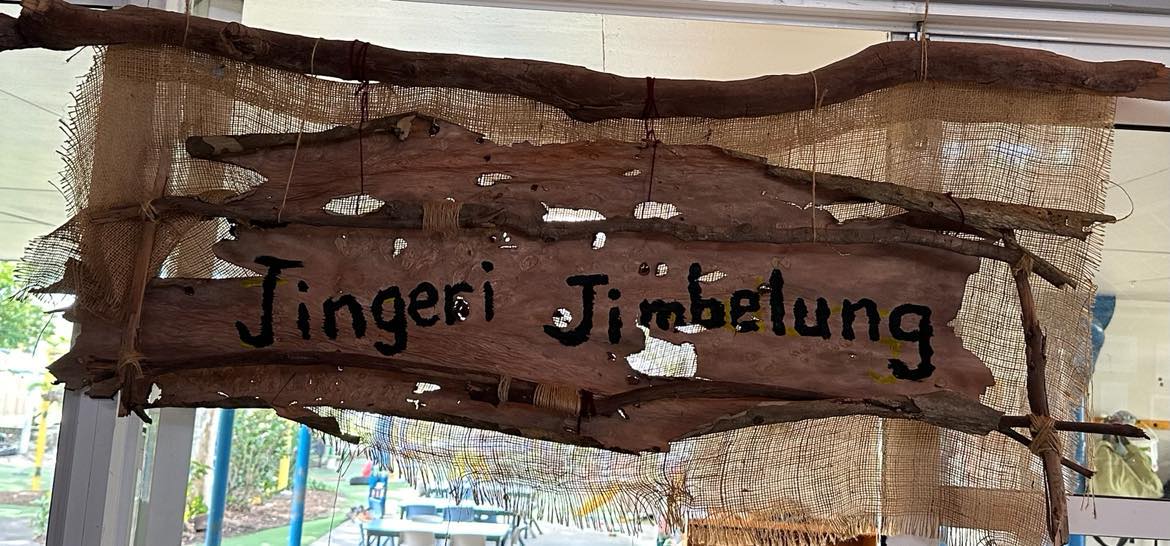
Practical Strategies for Embedding Cultural Perspectives
Educators can integrate Aboriginal and Torres Strait Islander perspectives into daily practices in various ways. One effective approach is to begin each day with a collaborative Acknowledgment of Country, using local languages and recognising the Traditional Custodians of the land. For instance, educators might greet students with the Yugambeh phrase “Jingeri jimbelungs” (hello friends) and honour the Elders of the Yugambeh speaking People, past, present, and emerging. Educators may also create their own Acknowledgement of Country with the children and also as an educational team to begin time where they come together such as team meetings, training and professional development opportunities.
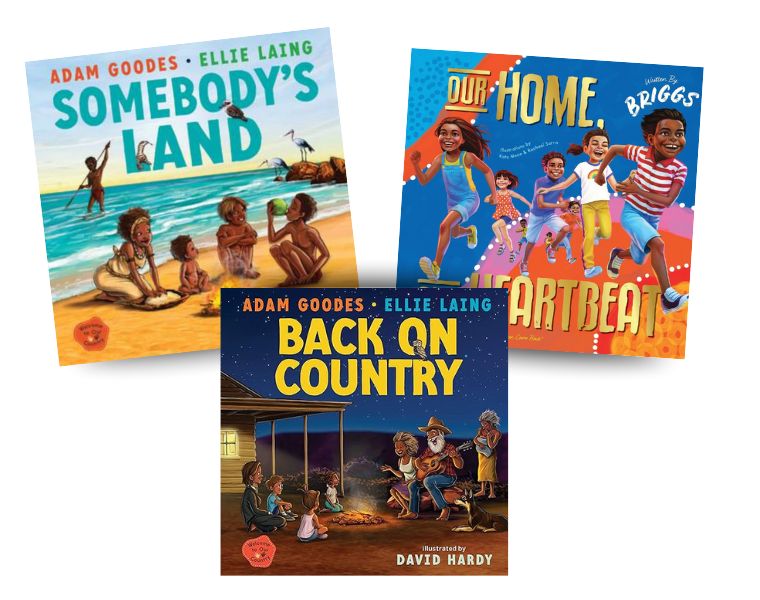
Reading books such as "Somebody’s Land" by Adam Goodes and Ellie Laing, which highlights First Nations culture and the impact of colonisation, is another powerful method. Additionally, Sharing stories and songs that celebrate First Nations achievements can build pride and a sense of belonging among Aboriginal and Torres Strait Islander children. For instance, "Our Home, Our Heartbeat" by Adam Briggs, featuring contributions from Gurrumul and Dewayne Everettsmith and inspired by Archie Roach, highlights the strength and achievements of First Nations peoples. This honours and fosters pride and belonging, reinforcing the strength-based perspective: "My history is my strength, my future is my own."
Engaging with the story "Back on Country" by Adam Goodes and Ellie Laing, children will explore the significance of Australia's First Nations Peoples' connection to Country, family, culture, and history. This fosters a strong sense of identity and belonging, contributing to Closing the Gap in early childhood education and care and aligns with the EYLF principle of integrating Aboriginal and Torres Strait Islander perspectives.
Introducing the Aboriginal and Torres Strait Islander Seasonal calendar into your curriculum can significantly enrich learning experiences. CSIRO, in partnership with First Nations communities, has developed seasonal calendars that document and present First Nations perspectives on Country. With nine calendars currently available on the CSIRO website (https://www.csiro.au/en/research/indigenous-science/indigenous-knowledge/calendars), these resources have proven to be valuable tools for illustrating Aboriginal and Torres Strait Islander connections to and understanding of seasonal changes. Educators can use these calendars as inspiration to create their own, reflecting the seasonal and elemental shifts observed with children in their local learning environments.
Educators can start by introducing seasonal indicators and noticing's through storytelling and observation activities, linking them to local environments and cultural practices. Collaborating with local First Nations community members or professional development providers can help design hands-on projects that explore seasonal changes in flora and fauna, encouraging children to connect with nature. Embedding cultural perspectives into arts and crafts, music, and language lessons fosters appreciation and ongoing reflection on seasonal cycles, nurturing a holistic understanding of the natural world and Aboriginal and Torres Strait Islander culture and knowledge.
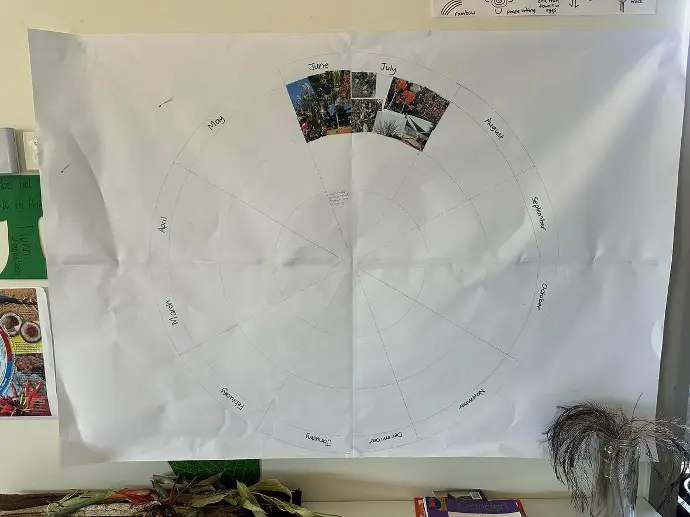
Seasonal Calendar from Bask Early Learning Toowoomba.
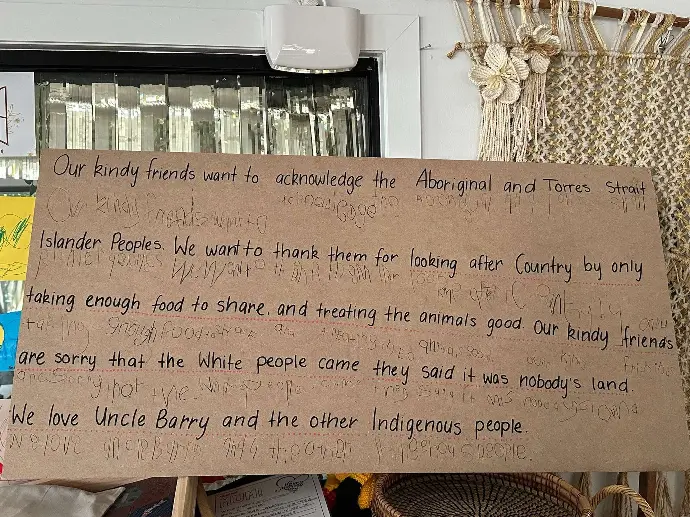
Acknowledgement from Goodstart Early Learning Shailer Park.
Visual Representations and Mapping
Educators can access visual aids like the AIATSIS map of Indigenous Australia, which illustrates the diverse Aboriginal and Torres Strait Islander Nation groups across the country, to help children understand the impact of colonisation. Comparing this map to a current map of Australia’s states and territories provides a powerful visual representation of the changes brought by colonisation. Additionally, when reading First Nations stories or books to children, listening to music, or examining artwork, educators can use the map to show which Country or Nation the book, music or artwork is from, deepening their understanding and connection to Country and culture.
Enhancing Educational Practices through First Nations Professional Development
Engaging in professional development with First Nations providers is essential for educators to deepen their understanding and appreciation of Aboriginal and Torres Strait Islander cultures. By participating in training sessions, workshops, and cultural immersion programs led by First Nations experts, educators can enhance their cultural competence and integrate authentic Aboriginal and Torres Strait Islander perspectives into their teaching practices. These opportunities also foster respectful relationships and collaboration with First Nations communities, improving educational outcomes by creating inclusive learning environments where Aboriginal and Torres Strait Islander children feel valued and supported. Such initiatives support the broader goals of Reconciliation by bridging cultural divides and promoting mutual understanding. Ultimately, ongoing professional development with First Nations providers ensures educators stay informed on best practices, enriching their ability to provide culturally responsive education that respects and celebrates Australia's diverse cultural heritage.
Joining a Community of Practice for Reconciliation and Cultural Learning
Joining a community of practice involves building collaborative partnerships with First Nations community members, educators, teachers, inclusion professionals, and early childhood consultants. It provides ongoing learning opportunities, focused discussions, and the chance to build relationships based on deep listening and cultural knowledge exchange. Within this community, achievements are celebrated, aspirations are shared, and collective goals related to Aboriginal and Torres Strait Islander perspectives are advanced. It serves as a supportive environment for unlearning and relearning, promoting truth-telling and a commitment to ongoing education about First Nations Australian cultures. By joining such a community, educators also contribute to the development of a Reconciliation Action Plan, empowering them to drive meaningful change and foster inclusive environments. Advocating for cultural connection and supporting others in their journey, educators play a crucial role in advancing healing and Reconciliation efforts, ensuring that First Nation Australians can transition from surviving to thriving.
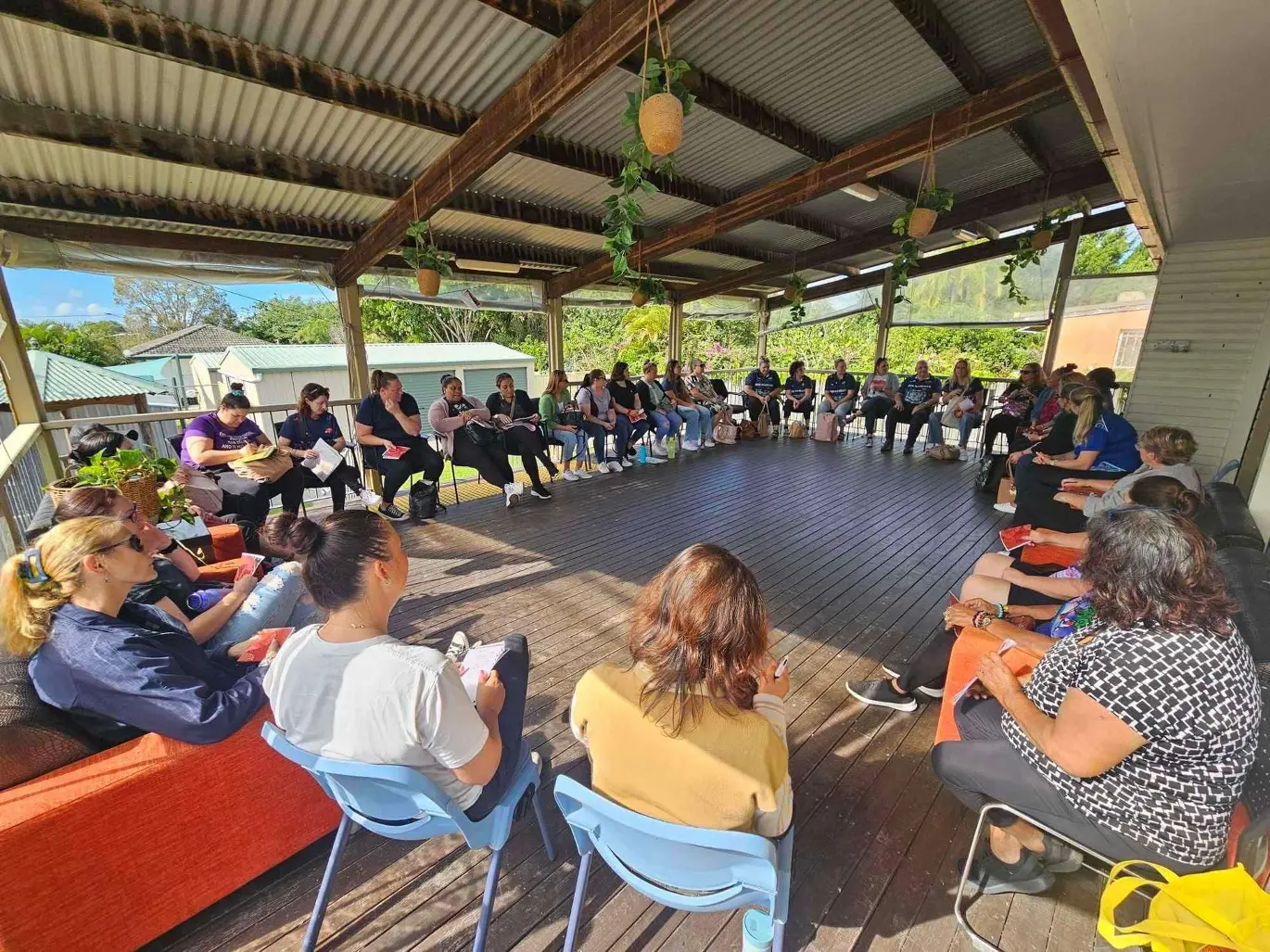
Yarns for Jarjumms Community of Practice at Gunya Meta.
Reflecting on Professional Practice
Reflective practice is key to ensuring that the inclusion of Aboriginal and Torres Strait Islander perspectives is meaningful and respectful. Educators are encouraged to engage in ongoing professional inquiry and seek assistance from First Nations community members to deepen their understanding of local cultural practices and histories. By building strong partnerships with Aboriginal and Torres Strait Islander families and communities, educators can create learning environments that are culturally safe and supportive.
Developing a Reconciliation Action Plan
Creating a Reconciliation Action Plan (RAP) is a meaningful journey for schools and early learning services to deepen their commitment to reconciliation by fostering stronger relationships, respect, and opportunities within the classroom, school, and wider community. The free Narragunnawali online platform offers practical tools and resources to help you start or enhance your reconciliation efforts. Whether you're building on an existing RAP or starting from the beginning. Narragunnawali supports you and your team in taking genuine steps towards reconciling non-First Nations Australians with Aboriginal and Torres Strait Islander peoples. Explore the films and resources available on the online platform to learn more about developing and implementing a RAP in a way that feels connected and authentic.
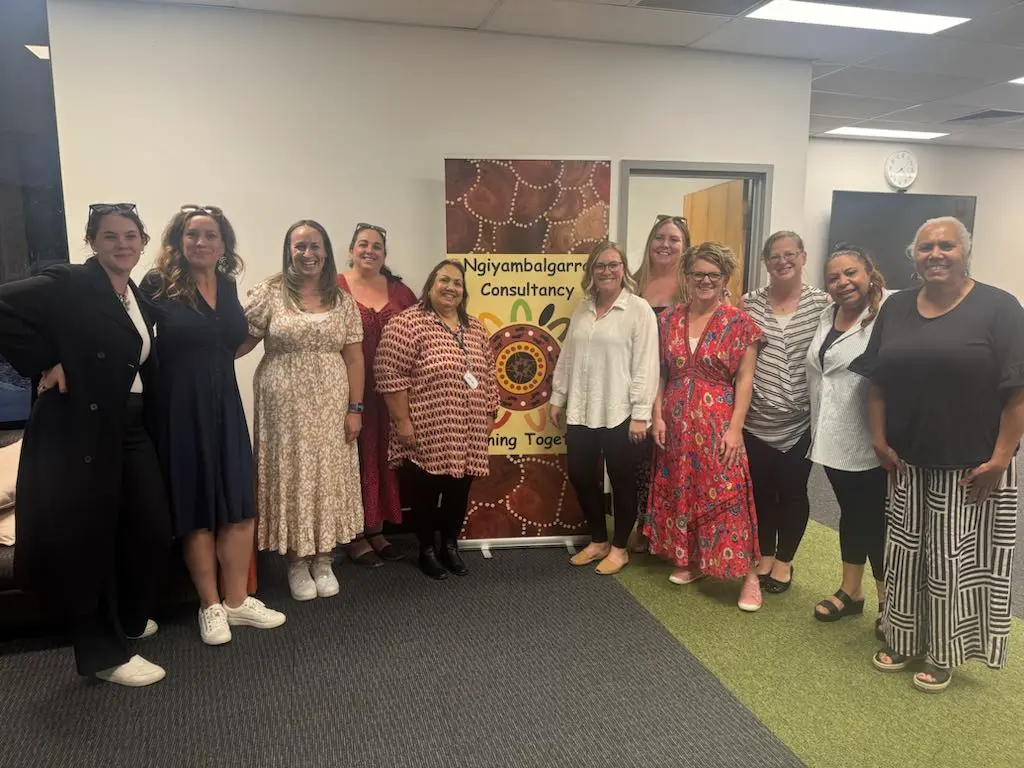
The Phoenix Support for Educators team engaging with training from Ngiyambalgarra Consultancy.
Commitment to Reconciliation and Cultural Safety
The Alice Springs (Mparntwe) Education Declaration and the National Agreement on Closing the Gap emphasises the importance of teaching all children about the diversity of Aboriginal and Torres Strait Islander cultures. When shaping curriculum that includes First Nations cultural ways of being and knowing, it is critical to include First Nations voices to maintain their connection to culture, kin, and community, ensuring positive outcomes for Aboriginal and Torres Strait Islander children's cultural safety and well-being.
Australia has a long journey ahead in creating pathways for partnerships that recognise Aboriginal and Torres Strait Islander culture as equal to Western knowledge (Priest, 2005). The Early Years Learning Framework, developed with First Nations education experts, underscores the importance of partnerships with families, recognising them as the child's first and most influential teachers. This recognition helps First Nations children, families, and communities feel a sense of belonging in early learning settings.
Integrating ‘two-way’ or ‘both-way’ learning into early childhood services promotes a decolonised approach to teaching Australia's history. Designing early learning settings that incorporate Aboriginal and Torres Strait Islander ways of knowing and being, creates culturally safe environments, advancing healing and reconciliation. The Guide to the National Quality Framework highlights the commitment to Closing the Gap in early education, acknowledging Australia’s First Nations peoples as long-time caretakers of the land.
Respectfully exploring the impacts of colonisation in Early Childhood education can be achieved through curriculums that integrate First Nations histories and perspectives. Early Childhood Educators in Australia can draw inspiration from NAIDOC themes like "Our Languages Matter," "Sacred Ground," and "Voice, Treaty, Truth", “Get up! Stand up! Show up!”, “Heal Country” and “For our Elders” to ensure that the truths of Aboriginal and Torres Strait Islander cultures and histories are authentically embedded within the curriculum.
When the true history of Australia can be told, healing can begin.
(Bedford, 2020)
By using their heads, hearts, and hands, and engaging in professional inquiry, educators can reflect on and enhance their practices. Through building strong partnerships with children, families, and the community, educators become co-learners in developing a deeper understanding of Australia’s First Nations Peoples, celebrating and honouring the strength and vitality of Aboriginal and Torres Strait Islander ways of being, knowing, and doing.
By acknowledging Aboriginal and Torres Strait Islander’s ancient and ongoing spiritual and cultural connection to the land, it will ensure that authenticity and relevance to the local community are embedded into Early education and care settings and schools.
This will assist in designing and developing two-way, culturally responsive, safe, and supportive early learning settings and curriculums. These environments will strengthen identity, culture, and spiritual connections, which are foundational to the success of Aboriginal and Torres Strait Islander children in education settings and ensure they have a sense of belonging right from the beginning.

Acknowledgements
I would like to Acknowledge the Aboriginal and Torres Strait Island Peoples as the Traditional Custodians across Australia and recognise First Nations Peoples continuing spiritual connection to culture, land, sea, and sky. I pay my respects to the Elders, past, present, and emerging as they hold the knowledge, wisdom, histories, languages, stories, and ways of being for First Nations People and children’s cultural identities across these ancient lands.
I would like to extend my heartfelt acknowledgment to the following individuals who have been instrumental in my journey of deepening my knowledge and understanding of Aboriginal and Torres Strait Islander culture: Uncle Barry Watson, Louisa Whettam, Aunty Janice Rocca, Aunty Robyn Williams, Michaela Williams, Cindy May and Gnirigomindala Karulbo. I am also deeply grateful to all the Aboriginal and Torres Strait Islander educators and children who have graciously welcomed me into their spaces, allowing me to share in their culture and engage in two-way learning.
Additionally, I would like to recognise my colleagues and friends who established the Our Nangara Community group, Uncle Barry Watson, Kristy Morgan, Sharon Saunders, Kellie Still and Kerry Smith. I would like to deeply thank the local Aboriginal and Torres Strait Islander elders, organisations and community representatives, especially Uncle Barry Watson, Aunty Rhonda Reid, Aunty Brenda Reid, Michaela Williams, Kerry Saunders and Keyra Saunders for their continued support and attendance to guide our journey; as well as the educators who participate in the Yarns for Jajumms community of practice. Their commitment to engaging in enriching professional conversations has been vital in creating culturally safe and inclusive environments for children and families in South East Queensland, fostering collective opportunities for healing and reconciliation in early childhood education and care.
About Tara
I was born and raised in Macksville on Gumbaynggirr Country and proudly have ancestral ties on my mother’s side to the Biripi People of Taree on the Mid-North Coast of New South Wales. I am deeply grateful to Uncle Barry Watson for his guidance on this path of learning and reconnection. I am committed to spending my life uncovering and understanding my ancestral history, including my great-grandmother’s story, and connecting with my heritage. By doing so, I aim to strengthen my identity and sense of self, as well as my children's, and share, celebrate, and connect to stories, music, and traditions with them.
I will continue to work alongside my First Nations friends and colleagues, including Our Nangara and other First Nations organisations on the path to reconciliation. I am committed to truth-telling about Australia's history and to celebrating traditions, ceremonies, and stories that honour the strength and resilience of all Aboriginal and Torres Strait Islander Peoples. Aligning with this year’s NAIDOC theme, my focus is to keep the fire burning, guiding us toward a warm and bright future.
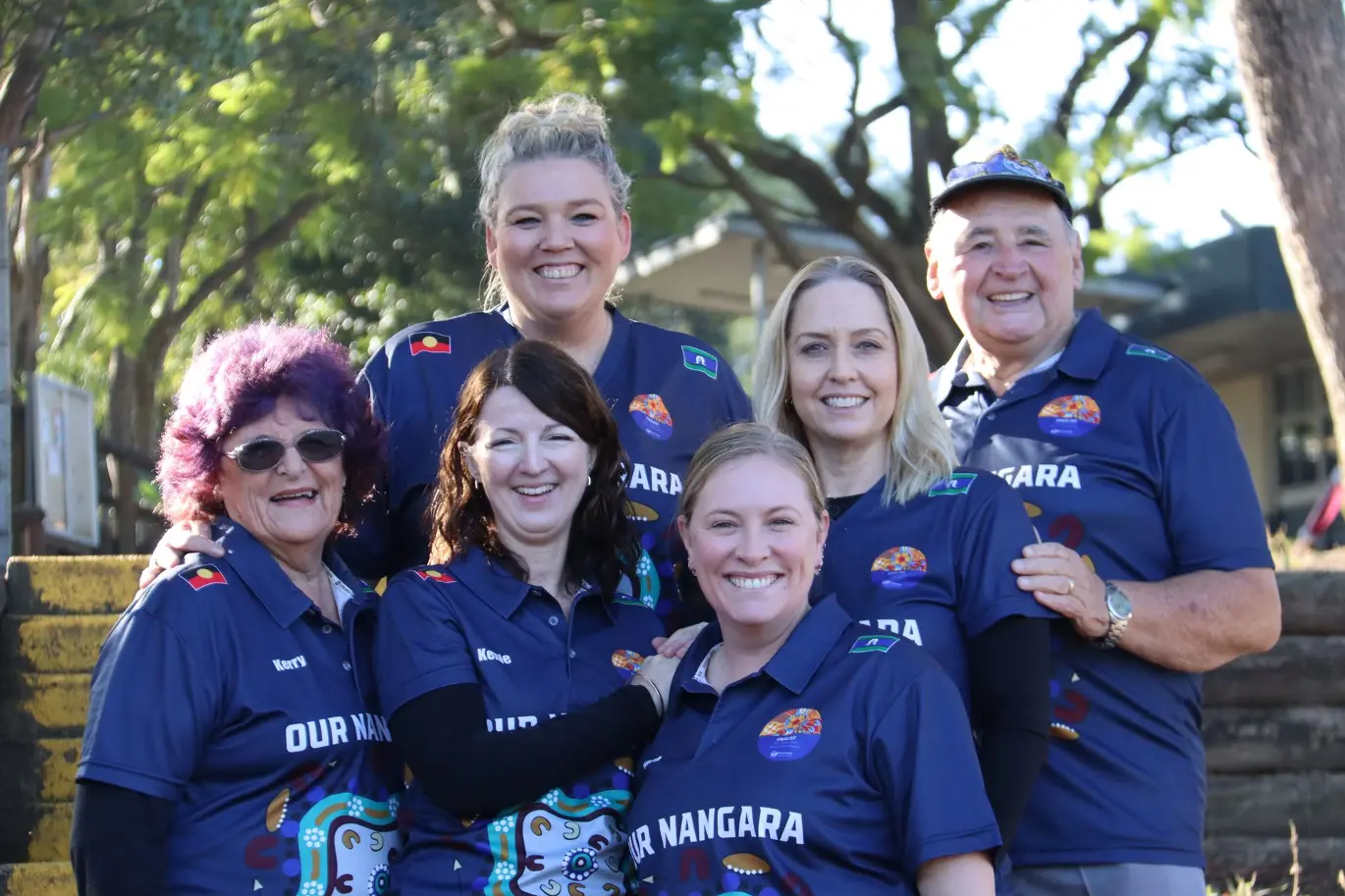
Tara and the Our Nangara team.
Sources
AIATSIS Map of Indigenous Australia https://aiatsis.gov.au/explore/map-indigenous-australia
Australian Children’s Education and Care Quality Authority [ACECQA] (2020). Guide to the National Quality Framework.
Australian Government Department of Education [AGDE] (2022). Belonging, Being and Becoming: The Early Years Learning Framework for Australia (V2.0). Australian Government Department of Education for the Ministerial Council.
Bedford, A., & Wall, V. (2020). Teaching as truth-telling : A demythologising pedagogy for the Australian frontier wars. Agora (Melbourne, Vic.), 55(1), 47–55. https://doi.org/10.3316/aeipt.227426
Department of Education, Skills and Employment (2020). The Alice Springs (Mparntwe) Education Declaration. https://education.gov.au/alice-springs-mparntwe-education-declaration/resources/alice-springs-mparntwe-education-declaration
Hooley, N. (2009). Two-Way Inquiry Learning. In Narrative Life. Springer Netherlands. https://doi.org/10.1007/978-1-4020-9735-5_10
Kitson, R., & Bowes, J. (2010). Incorporating Indigenous Ways of Knowing in Early Education for Indigenous Children. Australasian Journal of Early Childhood, 35(4), 81–89. https://doi.org/10.1177/183693911003500410
Narragunnawali - https://www.narragunnawali.org.au/